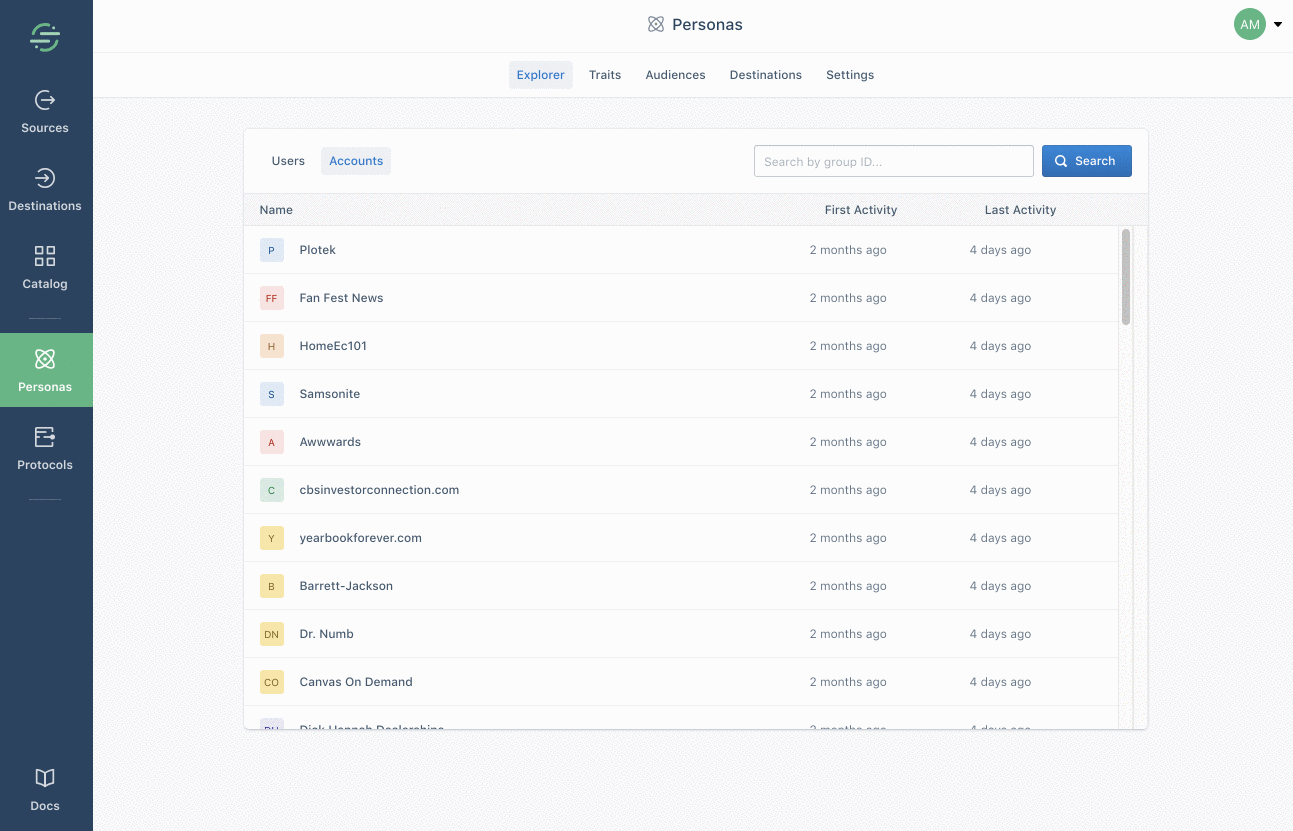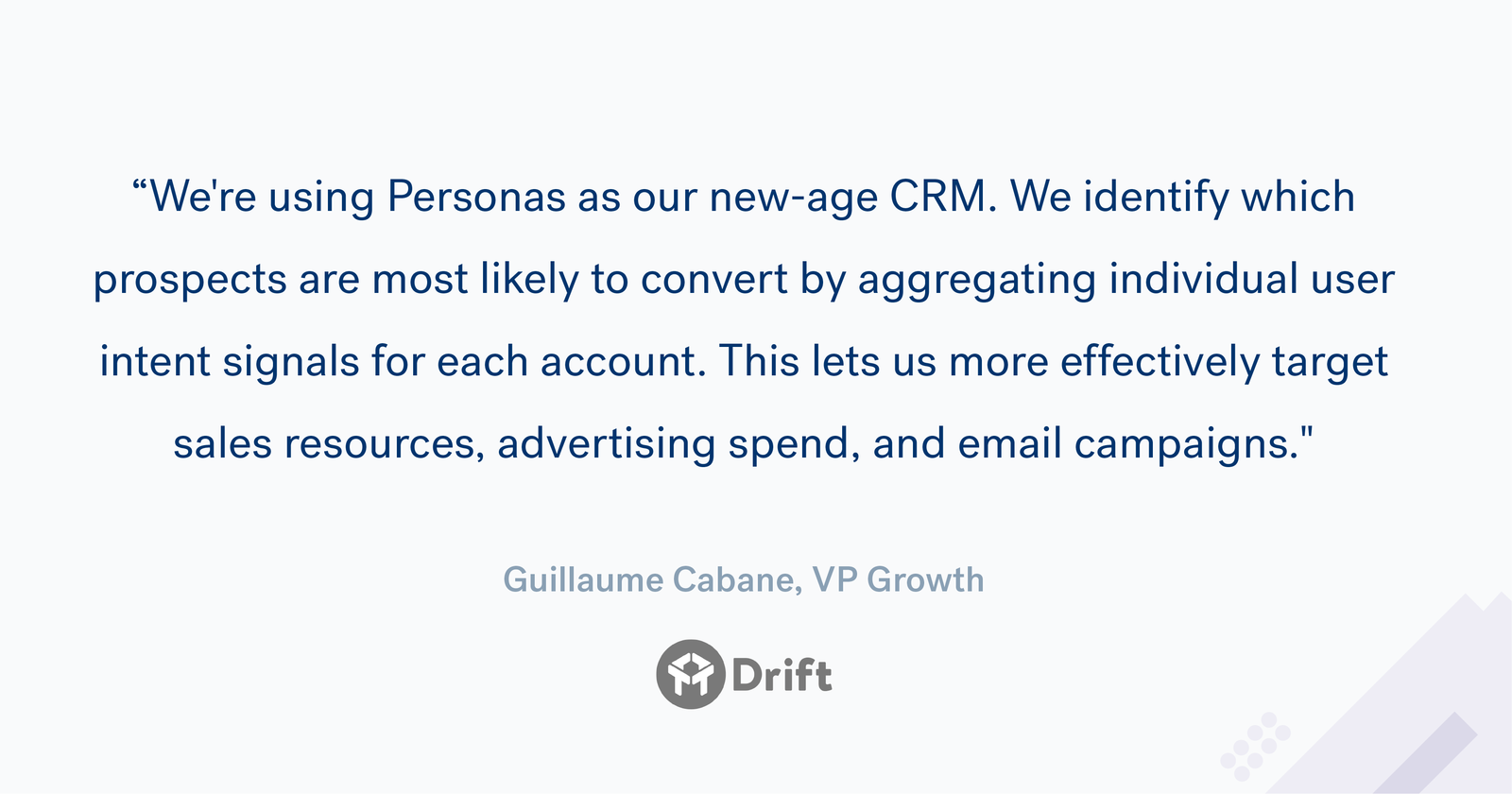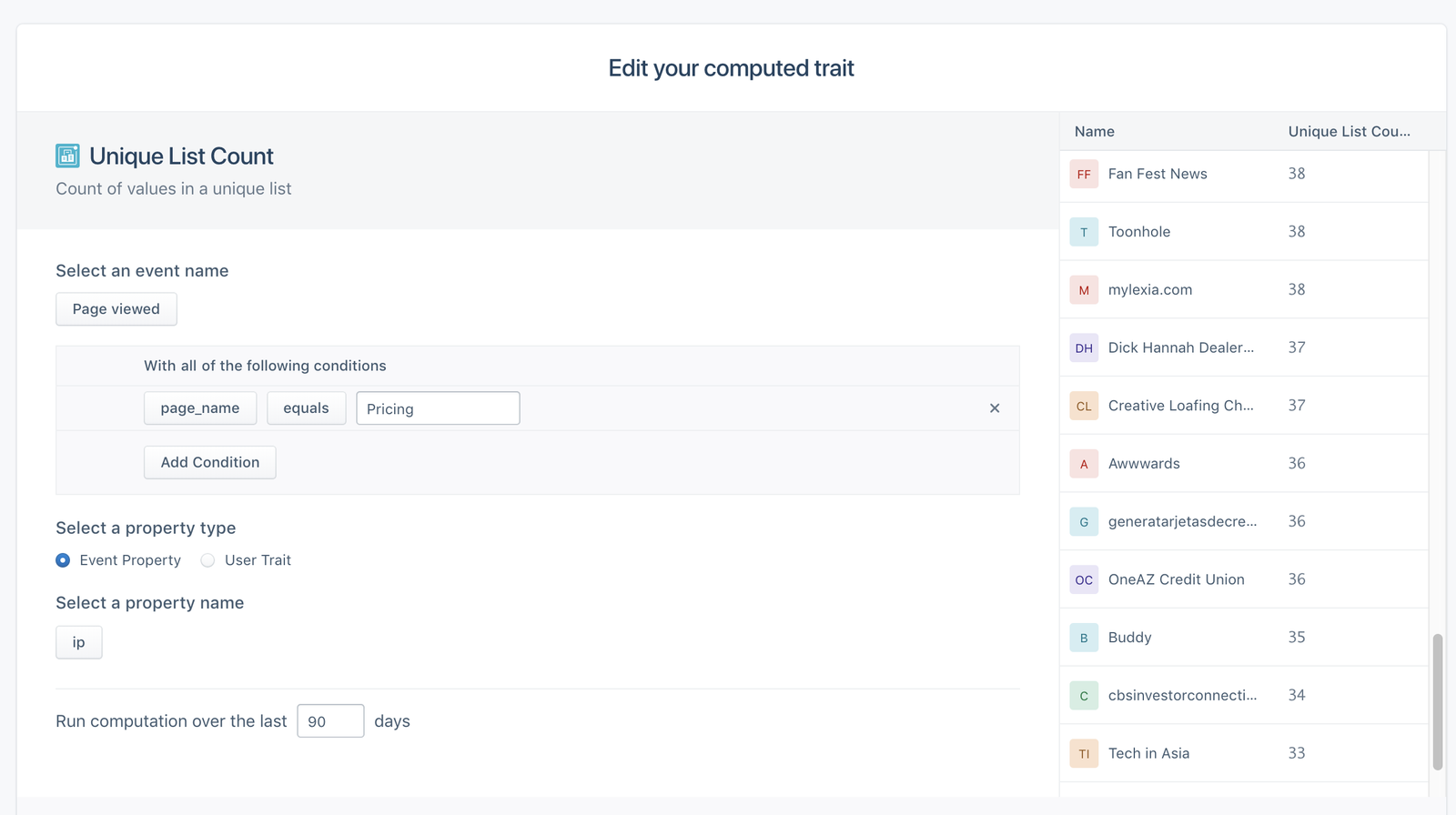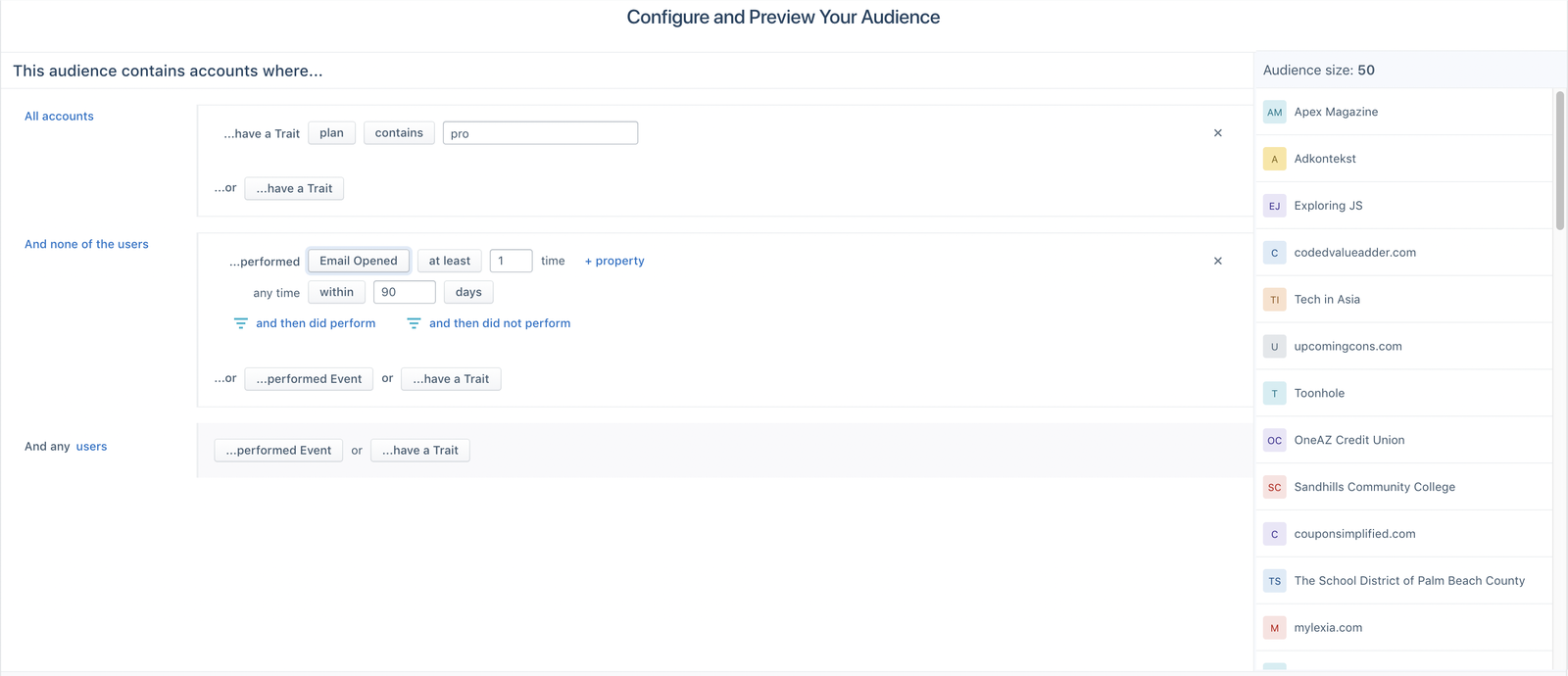Powering Account-Based Marketing Across Your Stack with Personas
Since this post, we’ve shipped another new Personas feature called SQL Traits. Get more information about it here.
B2B companies handle a lot of complexity in order to effectively engage their customers. First, they need to talk differently to users based on their role. Secondly, they need context on the account a user is a part of to ensure those communications are relevant and effective.
Sounds simple. The problem is that most marketing tools only operate at the user-level. B2B marketers, growth teams, and sales teams need to aggregate user behavior at the account-level in order to run effective campaigns. Without the right data infrastructure, it’s difficult to assign one user to a specific account or to determine which user in an account is the most active.
Adding to the challenge, the data you need to make this a reality is currently siloed in the tools your teams are using. Account data lives in a CRM like Salesforce. Website and product usage data lives in a data warehouse or analytics software. Up until now, there hasn’t been an easy solution to combine both data sets without requiring your engineering team to build and maintain multiple data pipelines.
Today, we’re introducing account-based Personas, which allows you to create account-level Profiles, Computed Traits, and Audiences.
Personas, Segment’s customer database and audience management solution, already enables you to view universal individual user profiles, identify key customer characteristics from your first-party data, build granular audiences, and share those audiences with each marketing and analytics tool you use.
Now, with the additional account-level data, you can power account-based marketing in your advertising, email, live chat, and push notifications tools with no additional configuration. You can also report at the user and account-level in your analytics tools.

Account-based Personas connects individual users to a specific account in one of two ways. The first is by implementing the group call in your apps. This is typically implemented when a user and account relationship is specified, for example when a user creates an account or a teammate is invited to an account. The second is to pull accounts from your data warehouse populated by the Salesforce cloud source.
Once that’s complete, you’ll have access to:
Accounts Explorer — displays account profiles including aggregations of all user events and the users associated with those accounts.
Account Computed Traits — similar to user-level Computed Traits, you can calculate things like who’s the most frequent user in an account, what’s the total number of messages sent to an account, or what are the unique count of active users in the last month.
Account Audiences — use account-level traits as well as user-level traits and events to define accounts that you want to target for a specific campaign. For example, you could create audiences for accounts likely to close, high-value accounts, or at risk accounts.
Profile API — retrieves all of the account Profiles, Computed Traits, and Audiences you’ve created programmatically. You can use that data to personalize your onboarding flow, product experience, or to check an accounts’ status in any of your data pipelines. For example, you could use the Accounts API in your email marketing workflows to check whether or not a user at an account already responded to a particular email campaign. If so, you can stop sending emails to everyone within that company.
To activate your account data, you can create audiences that include Account Computed Traits and user-level information. For example, you could create an audience of accounts likely to upgrade that include all users in those accounts that have viewed a new product page. Then, you can send that list of users directly to your marketing tools for personalized messaging or analytics tools for deeper analysis.
With our beta customers, and testing it ourselves at Segment, we’ve identified popular use cases for account-based marketing with Personas:
Capitalize on intent signals
Perfect the onboarding flow
Maximize the value of product champions
Predict and prevent churn

Capitalize on intent signals
With Personas, you can get much clearer signal on what accounts you should focus on for sales and marketing efforts. For example, using Personas and Clearbit Reveal—a Segment partner that helps match visitors to domains—you can determine how many unique visitors from a particular domain have visited your pricing page, a clear buying signal.
How it’s done: Build an account Computed Trait to calculate the number of unique IP addresses visiting your pricing page. Then, create an Audience specifying target accounts when the number of cumulative visits reaches a certain threshold. You can send the audience to your marketing tools, like Drift, to initiate a live chat conversation on behalf of a sales rep. In addition, you could send this data to Salesforce so that a rep has more context on the account in their next meeting.
Here’s the sample “unique list count” Computed Trait in Personas:

Perfect the onboarding flow
The first days and weeks of a customer relationship are critical in driving satisfaction and reducing churn. With Personas, you can easily understand where a company is in their onboarding journey and optimize the communications you send to each user accordingly.
How it’s done: Create an Audience of accounts that include any users that have completed one of your onboarding steps but not the next. Then, push that Audience to your marketing automation tool to have a personalized email sent that encourages all users at the account to take the next logical step. Remove all users at an account from the campaign once an account has completed onboarding.
Here’s the sample “onboarding in progress” Audience in Personas:

Maximize the value of product champions
Another key B2B use case for Personas is to identify your product champions within an account. Your product champion will be the user that has logged in most frequently over a certain time period. This segment is valuable because they’ll include the person at each account that you rely on when you need case studies, beta participants, product feedback, or have time-sensitive communications.
How it’s done: Create a Computed Trait that determines the user at an account that has logged in most. Then, reach out to that user specifically via email or directly in your product with a notification the next time they login.
Here’s the sample “product champion” Computed Trait in Personas:

Predict and prevent churn
There are many signs that could indicate that a customer is likely to churn. However, churn can often be prevented if you’re able to intervene early with the right message or offer.
How it’s done: Determine the common churn indicators at your company (e.g., low product usage, poor email engagement, a high number of support interactions, decreasing NPS score). If low email opens are a culprit, create an Audience of the accounts on a paid plan where no users have opened an email in the last 3 months. Send that Audience to your advertising and marketing automation tools for a re-engagement campaign.
Here’s the sample “likely to churn” audience in Personas:

Understanding both a user’s behavior and information about their account unlocks numerous opportunities to better engage and retain them.
Beyond the sample Computed Traits and Audiences listed above, you can also use account-based Personas to inject context about a user and their account into pre-existing workflows for sales and success. Using the Profile API, you can embed account and user-level information into tools like Salesforce, Zendesk, or Desk.com to ensure that, at each point in the journey, customers are receiving a personalized and relevant experience.
Want to learn more about how to setup account-based Personas in your Segment account? Check out our documentation.
New to Personas and want to learn more? Request a personalized demo.

Our annual look at how attitudes, preferences, and experiences with personalization have evolved over the past year.